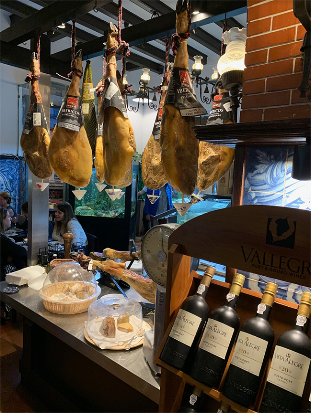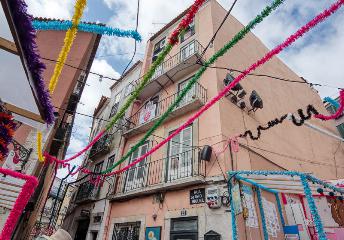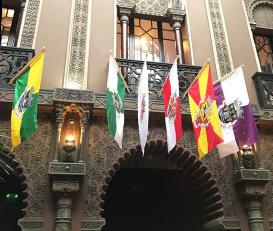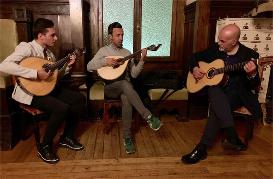Lisbon


Copyright Karen Overall Travelin' Trio Home Page

Day 0 - We arrived in Lisbon a day before our tour was to begin. We didn't want jet lag or any travel hiccups to keep us from missing a single moment of our amazing trip.
After a very inexpensive and pleasant Uber ride from the airport through town (with a very nice and helpful driver), we checked into the My Story Hotel in the heart of Lisboa. We walked from Rossio Square (right by our hotel) down Rua Augusta, a wide, bustling pedestrian walkway covered in beautiful tiles and lined with shops and restaurants.

At the end of Rua Augusta is the Praca do Comercio (Commerce Square), the site of the Royal Palace until it was destroyed by the 1755 earthquake and tsunami. The beautiful Arch, Arco da Rua Augusta, was added to commemorate the city's reconstruction after the earthquake. We took photographs throughout the golden and blue hours and ended our first night with some traditional Portuguese food at O'Porto's Restaurant located on another pedestrian walk parallel to Run Augusta.

Day 1 - We showed up at the Rick Steves welcome meeting, met Fatima, our guide for the next 12 days, and the other 25 tour members. We got an overview of the tour, picked buddies, and had a social with wine and snacks. Then it was off on a walking tour of the neighborhood near our hotel. Fatima took great pride in sharing her home, its history, and its culture.
Highlights included the building where Portugal’s last dictator stepped down without a shot being fired in the revolution, a church that survived the 1755 earthquake, the city’s tribute to the pavers who created the beautiful tile streets, a funicular ride, and a spectacular view of the city.
Dinner was a family style meal of traditional Portuguese foods including lots of local and delicious meat, potatoes, and wine.

Day 2 - Our walking the next morning took us past the Rua Augusta Arch to Alfama, an area that used to be outside the city wall, so outcasts lived here as they were not protected by the rulers at that time. We then began a slow ascent up the hill that has St. George’s castle at the top.
Throughout the city, people were preparing to celebrate the feast of St. Anthony, patron saint of Lisboa. The celebration has its religious side but it has also become a celebration of the city itself: Festas de Lisboa.
The Castelo de Sao Jorge is entwined in Lisbon’s early history; it saw the fall of the Romans to the Visigoths, experienced the fierce conflicts between the Arabs and Christians, survived formidable sieges by the Castilians and witnessed the birth of Portugal as a seafaring nation.
On our walk back down the hill, we ate lunch at a literal hole-in-the-wall restaurant and wandered past Cathedral of Santa Maria Maior, the Church of St. Anthony, shops, and plenty of tiled streets and buildings.
Throughout the city, people were preparing to celebrate the feast of St. Anthony, patron saint of Lisboa. The celebration has its religious side but it has also become a celebration of the city itself: Festas de Lisboa.
The Castelo de Sao Jorge is entwined in Lisbon’s early history; it saw the fall of the Romans to the Visigoths, experienced the fierce conflicts between the Arabs and Christians, survived formidable sieges by the Castilians and witnessed the birth of Portugal as a seafaring nation.
On our walk back down the hill, we ate lunch at a literal hole-in-the-wall restaurant and wandered past Cathedral of Santa Maria Maior, the Church of St. Anthony, shops, and plenty of tiled streets and buildings.



Dinner that night was in a former 17th century Moorish palace. The building served at one point as a community center for people from the Alentejo region who had moved to Lisbon. Now it’s a restaurant with beautiful ballrooms and private dining rooms. Many local and delicious choices for starters (meat, bread, garbanzo beans, and olives). Dessert was a custard/cake-like sweet with a plum cooked in sugar.
A highlight of the evening was our dinner entertainment. Fado is a traditional Portuguese music known for its soulful sounds. It is “characterized by mournful tunes and lyrics, often about the sea or life of the poor, and infused with a sentiment of resignation, fatefulness, and melancholia.” A quintet featuring two female singers, a classical guitar player, and two Portuguese guitar players performed for us.
Day 3 - Today was a bus tour of parts of Lisboa we haven’t been able to get to on our walking tours. We saw the Monument to the Carnation Revolution in the Edward VII Park--a modern tribute to the 1974 military coup in Lisboa which overthrew the authoritarian regime. Then we went to a former monastery of the Order of Saint Jerome near the Tagus river in the parish of Belém It was started in 1495 and survived the 1755 earthquake.
While we were touring the monastery, Fátima stood in line to get some of the famous Pastéis de Belém. She greeted us in the shade of the nearby patio with the delectable traditional pastry.

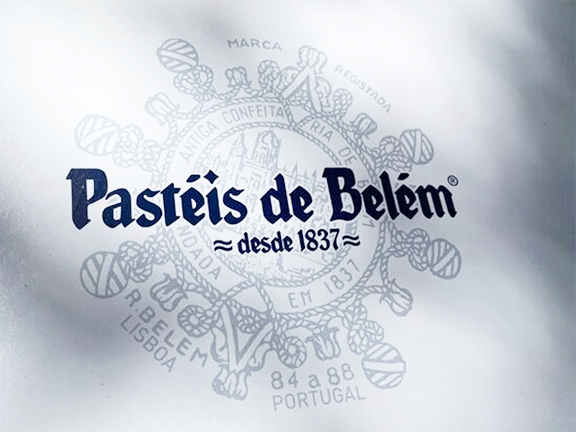
We then boarded the bus to safely cross the freeway to get to the Jardim da Torre de Belém: beautiful gardens that contain both the Tower of Belém (built in 1514 to serve both as a fortress and as a port)...
...and the Monument to the Discoveries (built in 1961 to celebrate the Portuguese Age of Discovery).



We also went to the Museu Calouste Gulbenkian for lunch and a tour. Everyone was on their own for the rest of the day so we went back to Praça do Comércio and this time went all the way across the plaza to the water's edge and got great photos during "blue hour".












